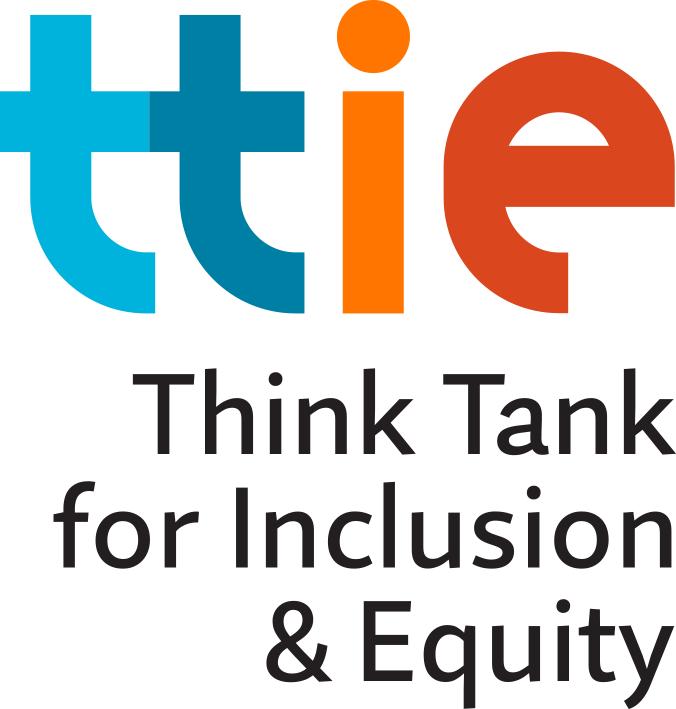#WriteInclusion Factsheets
Expanded glossary of terms
Scroll down to read our full glossary, or click to filter by a specific Factsheet category.
FILTER BY FACTSHEET
SEARCH FOR A SPECIFIC TERM
Passing
The ability for a person in an oppressed group to move through the world as a more privileged identity than the one they are. In BIPOC communities, passing refers to a person, often mixed-race, with features that adhere to Eurocentric beauty standards (e.g., light skin, straight hair) who may be mistaken for being white. For trans people, this means being perceived as cisgender by others. (Note: trans women perceived as women are not "passing as women" – they are women. The same is true for trans men – they are men.) Passing is not a goal for all trans people but can aid in a trans person’s safety. Passing is also sometimes used to describe gay, lesbian, bi+, or ace people who are perceived as heterosexual until they disclose their sexual orientation.
The ability for a person in an oppressed group to move through the world as a more privileged identity than the one they are. In BIPOC communities, passing refers to a person, often mixed-race, with features that adhere to Eurocentric beauty standards (e.g., light skin, straight hair) who may be mistaken for being white. For trans people, this means being perceived as cisgender by others.
Note: trans women perceived as women are not "passing as women" – they are women. The same is true for trans men – they are men. Passing is not a goal for all trans people but can aid in a trans person’s safety. Passing is also sometimes used to describe gay, lesbian, bi+, or ace people who are perceived as heterosexual until they disclose their sexual orientation.
Social Determinants of Health (SDoH)
(SDoH): The conditions in which people are born, grow, live, work, and age. These are shaped by the distribution of money, power, and resources at global, national, and local levels. Conditions (e.g., social, economic, physical) in these various environments and settings (e.g., school, church, workplace, neighborhood) have been referred to as “place.” In addition to the more material aspects of “place,” patterns of social engagement and sense of security and well-being are also affected by where people live. Resources that enhance quality of life can have a significant influence on population health outcomes (e.g., safe and affordable housing, availability of healthy foods, toxin-free environments). How population groups experience “place” directly impacts the specific social components of SDoH (e.g., access to educational, economic, and job opportunities; public safety; language and literacy) and public components of SDoH (e.g., natural environments, built environments). See here for more details.
The conditions in which people are born, grow, live, work, and age. These are shaped by the distribution of money, power, and resources at global, national, and local levels. Conditions (e.g., social, economic, physical) in these various environments and settings (e.g., school, church, workplace, neighborhood) have been referred to as “place.” In addition to the more material aspects of “place,” patterns of social engagement and sense of security and well-being are also affected by where people live.
Resources that enhance quality of life can have a significant influence on population health outcomes (e.g., safe and affordable housing, availability of healthy foods, toxin-free environments). How population groups experience “place” directly impacts the specific social components of SDoH (e.g., access to educational, economic, and job opportunities; public safety; language and literacy) and public components of SDoH (e.g., natural environments, built environments). See here for more details.
Trauma Porn
Refers to art or media that exploits the pain, suffering, and brutalization of marginalized people for the sake of entertainment. These depictions cater to non-marginalized viewers and characters rather than exploring the experience, situation, or POV of the person(s) being victimized. These kinds of depictions are harmful for all viewers as they deny the life and livelihood of those being victimized, devaluing their existence in our communities and society, granting no opportunity for empathy and deeper understanding.
Refers to art or media that exploits the pain, suffering, and brutalization of marginalized people for the sake of entertainment. These depictions cater to non-marginalized viewers and characters rather than exploring the experience, situation, or POV of the person(s) being victimized. These kinds of depictions are harmful for all viewers as they deny the life and livelihood of those being victimized, devaluing their existence in our communities and society, granting no opportunity for empathy and deeper understanding.
U.S. Census
The U.S. Constitution mandates that America gets only one chance every 10 years to count its population. The U.S. Census counts every resident in the United States. The data collected determine the number of seats each state has in the U.S. House of Representatives (a process called apportionment) and is also used to distribute billions in federal funds to local communities. Find more here.
The U.S. Constitution mandates that America gets only one chance every 10 years to count its population. The U.S. Census counts every resident in the United States. The data collected determine the number of seats each state has in the U.S. House of Representatives (a process called apportionment) and is also used to distribute billions in federal funds to local communities. Find more here.
